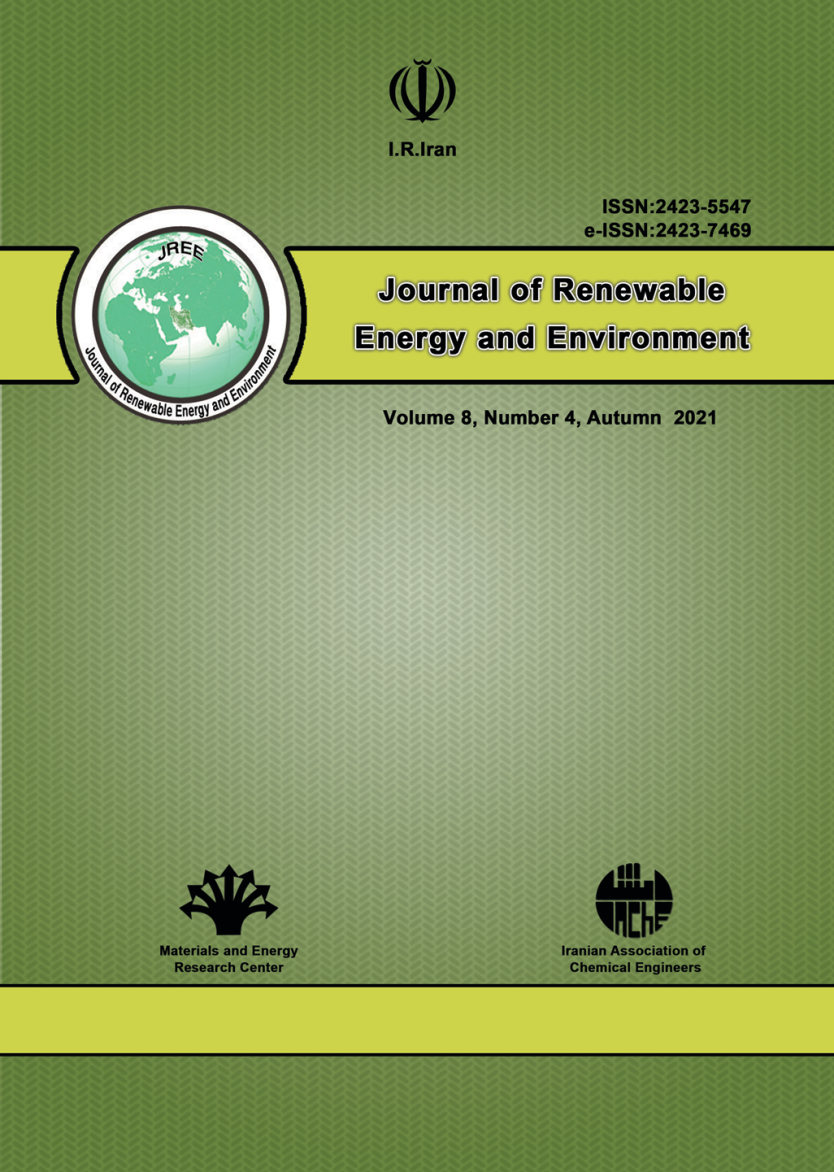Document Type : Research Note
Authors
Department of Electrical and Electronic Engineering, International University of Business Agriculture and Technology, Dhaka-1230, Bangladesh.
Abstract
In the context of increasing emission of greenhouse gasses in the environment due to fossil fuel burning, this paper attempts to describe the significance of Maximum Power Point Tracking (MPPT) by investigating the power performance of photovoltaic modules with MATLAB simulation. MPPT algorithm was employed to secure maximum power from PV module. The boost converter whose pulse is linked to MPPT algorithm restricts the flow of load power and controls the current and voltage of PV panels. The whole design of the solar model, boost converter, and MPPT controlled algorithms was done in the SIMULINK to prioritize the system in simulation. The main concept employed in this paper was to develop a power generation process with MPPT algorithm and to provide information for future use. In this paper, all simulations along with the PV power generation process were done in MATLAB. This research could potentially play a vital role in mitigating the world fuel crisis.
Keywords
Main Subjects
- Bhagwat, P.C., Richstein, J.C., Chappin, E.J.L. and De Vries, L.J., "The effectiveness of a strategic reserve in the presence of a high portfolio share of renewable energy sources", Utilities Policy, Vol. 39, (2016), 13-28. (https://doi.org/10.1016/j.jup.2016.01.006).
- Singh, B.R. and Singh, O., "Global trends of fossil fuel reserves and climate change in the 21st century", In: Khan, Sh. (Ed.), Fossil fuel and environment, Chapter 8, InTech, India, (2012), 167-192. (https://doi.org/10.13140/2.1.1079.8084).
- Sheik Mohammed, S. and Devaraj, D., "Simulation of incremental conductance MPPT based two phase interleaved boost converter using MATLAB/SIMULINK", Proceedings of 2015 IEEE International Conference on Electrical, Computer and Communication Technologies (ICECCT), Coimbatore, India, (2015), 1-6. (https://doi.org/10.1109/ICECCT.2015.7225987).
- Chandwani, A. and Kothari, A., "Design, simulation and implementation of Maximum Power Point Tracking (MPPT) for solar based renewable systems", Proceedings of 2016 International Conference on Electrical Power and Energy Systems (ICEPES), Bhopal, India, (2016). (https://doi.org/10.1109/ICEPES.2016.7915987).
- Chiu, C.-S., "T-S fuzzy Maximum Power Point Tracking control of solar power generation systems", IEEE Transactions on Energy Conversion, Vol. 25, No. 4, (2011), 1123-1132. (https://doi.org/10.1109/TEC.2010.2041551).
- Carrasco, J.A., de Quiros, F.G., Alaves, H. and Navalon, M., "An analog Maximum Power Point Tracker with pulsewidth modulator multiplication for a solar array regulator", IEEE Transactions on Power Electronics, Vol. 34, No. 9, (2019), 8808-8815. (https://doi.org/10.1109/TPEL.2018.2886887).
- Atiq, J. and Kumar Soori, P., "Modelling of a grid connected solar PV system using MATLAB/SIMULINK", International Journal of Simulation: Systems, Science and Technology, Vol. 17, No. 41, (2017), 45.1-45.7. (https://doi.org/10.5013/IJSSST.a.17.41.45).
- Said, S., Massoud, A.M., Benammar, M. and Ahmed, Sh., "A MATLAB/SIMULINK-based photovoltaic array model employing SimPowerSystems toolbox", Journal of Energy and Power Engineering, Vol. 6, (2012), 1965-1975. (https://www.academia.edu/2887497/A_Matlab_Simulink_Based_Photovoltaic_Array_Model_Employing_SimPowerSystems_Toolbox?auto=download).
- Said, S., Massoud, A.M., Benammar, M. and Ahmed, Sh., "Development of generalized photovoltaic model using MATLAB/SIMULINK", Proceedings of the World Congress on Engineering and Computer Science, San Francisco, USA, (2008). (http://s2i.bordeaux.free.fr/Espace%20Terminale/Ressources/Projet/ProjetASI/2.%20Development%20of%20Generalized%20Photovoltaic%20Model%20using%20Matlab.pdf).
- Murshed, N., Khan Tushar, Md.S. and Chowdhury, S., "Power performance analysis of PV module with dc to dc buck converter", Advanced Journal of Graduate Research, Vol. 1, No. 9, (2019), 27-39. (https://doi.org/10.21467/ajgr.8.1.27-39).
- Sheik Mohammed, S., "Modeling and simulation of photovoltaic module using MATLAB/SIMULINK", International Journal of Chemical and Environmental Engineering, Vol. 2, No. 5, (2013), 24-32. (https://www.researchgate.net/publication/301602460_Mathematical_Modeling_and_Digital_Simulation_of_PV_Solar_Panel_using_MATLAB_Software).
- Surya Suresh, K. and Vishnu Prasad, M., "PV cell based five level inverter using multicarrier PWM", International Journal of Modern Engineering Research (IJMER), Vol. 1, No. 2, 545-551. (chrome-extension://efaidnbmnnnibpcajpcglclefindmkaj/viewer.html?pdfurl=http%3A%2F%2Fwww.ijmer.com%2Fpapers%2Fvol%25201%2520issue%25202%2FAP012545551.pdf&clen=701280&chunk=true).
- Ilyas, A., Ayyub, M., Rizwan Khan, M., Jain, A. and Aslam Husain, M., "Realisation of incremental conductance MPPT algorithm for solar photovoltaic system", International Journal of Ambient Energy, Vol. 39, No. 8, (2018), 873-884. (https://doi.org/10.1080/01430750.2017.1354322).
- Sarathi Maji, P., Dikshit, S. and Mohapatra, S., "Modelling and simulation of photovoltaic model using incremental conductance algorithm", International Journal of Engineering and Management Research, Vol. 4, No. 2, (2012), 205-211. (https://www.ijemr.net/DOC/ModellingAndSimulationOfPhotovoltaicModelUsingIncrementalConductanceAlgorithm(205-211)626d1cf0-bc09-476b-a1fe-205846b3a526.pdf).
- Ritu, Verma, N., Mishra, Sh. and Shukla, S., "Implementation of solar based PWM fed two phase interleaved boost converter", Proceedings of International Conference on Communication, Control and Intelligent Systems (CCIS), (2015), 470-476. (https://doi.org/10.1109/CCIntelS.2015.7437962).
- Sreenivasa Rao, K. and Mahesh, M., "ARM based solar tracking system", International Journal of Modern Engineering Research (IJMER), Vol. 2, No. 4, (2012), 2504-2507. (chromeextension://efaidnbmnnnibpcajpcglclefindmkaj/viewer.html?pdfurl=http%3A%2F%2Fwww.ijmer.com%2Fpapers%2FVol2_Issue4%2FDA2425042507.pdf&clen=492184&chunk=true).
- Chandwani, A. and Kothari, A., "Comparative study of Maximum Power Point Tracking algorithms”, Progress in Photovoltaics: Research and Applications, Vol. 11, (2003), 47-62. (https://doi.org/10.1002/pip.459).
- Glasner, I. and Appelbaum, J., "Advantage of boost vs. buck topology for Maximum Power Point Tracker in photovoltaic systems", Proceedings of 19th Convention of Electrical and Electronics Engineers in Israel, Jerusalem, Israel, (1996), 355-358. (https://doi.org/10.1109/EEIS.1996.566988).

